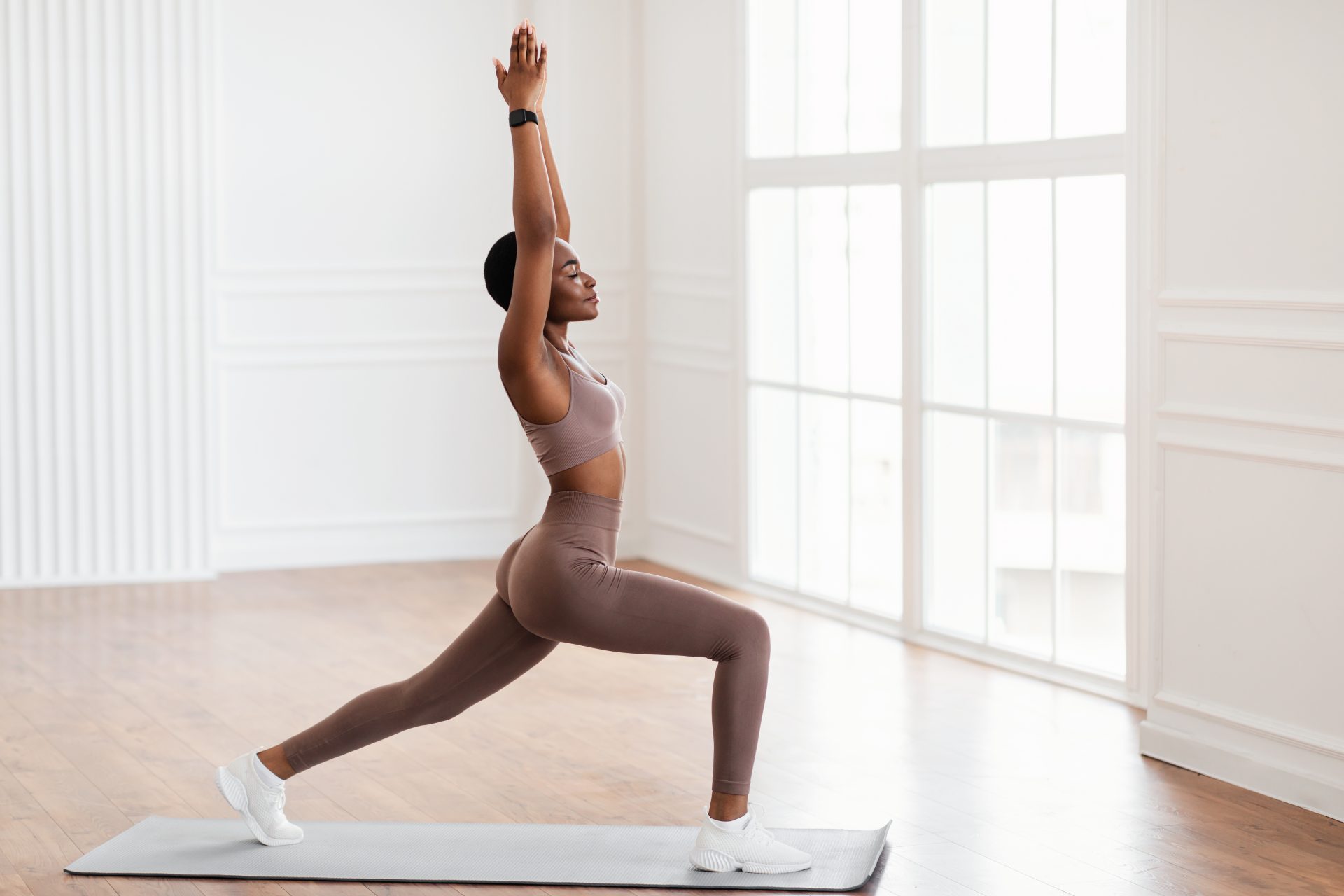This January, we’re on the search for quick, accessible hacks to kickstart 2023 in the strongest way possible. Today’s cardio kickstarter: high-intensity pilates – the low-impact exercise turning up the sweat dial.
We know what you’re thinking: pilates classes are already hard. Not only do you have to work against your body weight for a long period of time (looking at you, pilates hundred), but you also have to nail your breathwork and engage your core during every single move.
But in 2023, pilates practices are being stepped up a notch. Fitness studios are introducing high-intensity pilates, fusing traditional mat and reformer pilates with high-intensity movements.
You may also like
30 days of pilates: “Here’s how classical pilates made me physically and mentally stronger”
FS8, a new high-intensity pilates concept from the owners of the F45 chain of fitness centres, opened the first European studio in Oxford Street at the end of last year with a mission to fuse reformer, weights and HIIT. London studio Psycle has also developed Reform-X, dubbed “reformer but not as you know it” thanks to its added “power, intensity and dynamism”.
What is high-intensity pilates?
So what goes on in one of these classes? Well, unlike traditional pilates where the focus is on strength endurance, high-intensity pilates is all about getting the heart rate up at the same time. Typically, that’s done by minimising rest between pilates sets or adding in HIIT moves alongside pilates resistance skills.
At FS8, for example, you work on the reformer for six to nine-minute sets without a rest (yes, really). After that, you move to mat-based work that includes squats and lunges to get the heart rate up.
What are the benefits of high-intensity pilates?
So, what are the benefits of fusing all of these workouts together? Firstly, know that you don’t have to do high-intensity pilates just because it’s trendy. Some people prefer to go for a run or perform traditional HIIT for their cardio, saving pilates or weight lifting for days when they’re focused on strength training
But for many people, the joy of high-intensity pilates is that you train multiple modalities in one condensed session.
That’s particularly true for people who are busy or wouldn’t usually schedule in a workout outside of their comfort zone. “Many people find a workout they like and keep repeating it, which means they might plateau or avoid other styles of training that benefit their health,” says Emily Rutherwood, expert trainer at FS8.

“By pairing pilates moves in a way that ups the intensity and adding in cardio exercises and weights, it helps to keep you engaged and ensures your body is always working in different ways to keep getting results without extra time in the gym.”
How to do high-intensity pilates
Slow and controlled movements are a pillar of pilates, so high-intensity pilates doesn’t mean rushing through the moves. Instead, it’s about piecing together pilates moves to raise your heart rate.
Try these combos for an at-home high-intensity pilates session:
Try 60 seconds of each exercise with no rest in between, then rest for 30 seconds between sets.
Pilates lunges
Stand with your feet shoulder-width apart and step one foot back, bending the knee, to come into a lunge position. Engage the core and lift your arms to the sides, then pulse up and down in the lunge position.
Jumping lunges
Begin in the same position and jump one foot back to a lunge position. Jump out of the lunge and swap feet mid-air, so the back foot is now at the front.
Pilates press ups
Begin in a high plank position with your elbows tucked in at your ribs the whole time. Slowly lower your chest to the floor, hovering above the ground, then press back up to the high plank.
Mountain climbers
Back in the high plank position, bend one knee in towards your chest. Push it back down and repeat on the opposite side. Jump between changes.
Pilates hundred
Sitting in a V-position, bend your legs so your shins are parallel with the floor. Place your arms out straight in front of you and begin pulsing them up and down.
Russian twists
Place your feet down on the floor in the V-position and begin to twist from side to side, tapping your hands either side of your obliques as you turn.
Images: Getty
Source: Read Full Article
